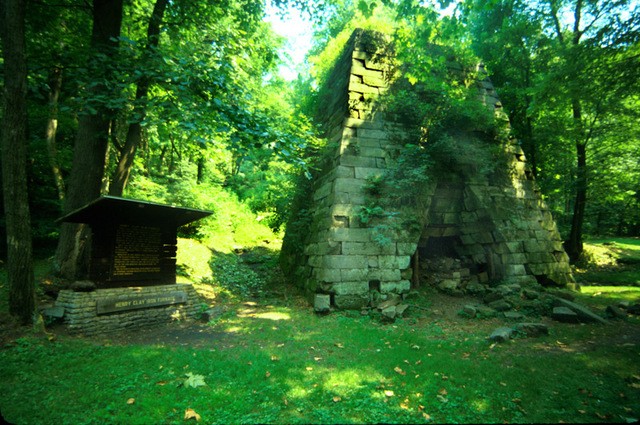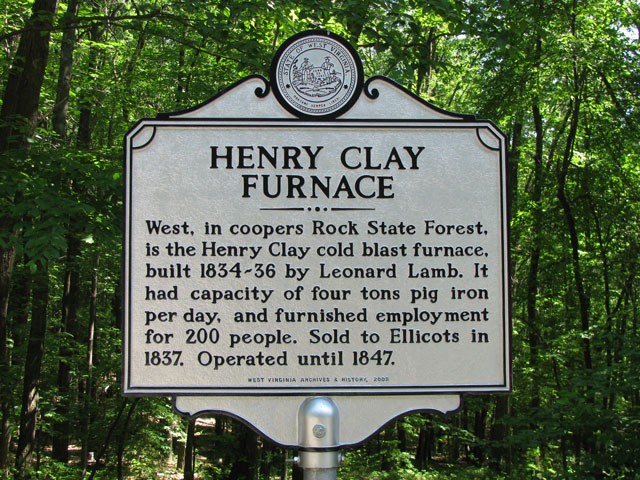Henry Clay Furnace.
Introduction
Text-to-speech Audio
Images
The Henry Clay Furnace.

Historical Marker at the site.

Artists rendition of an early blast furnace. Notice the workers "charging" or loading the iron ore, charcoal, and limestone flux at the top of the furnace and the molds which the melted iron was pored into at the base of the furnace.

Another picture of the furnace.

Backstory and Context
Text-to-speech Audio
The iron industry is one of West Virginia’s earliest and most profitable industries. The state’s abundance of natural resources critical to the manufacture of iron such as iron ore, timber, limestone, and coal, made northern West Virginia a logical and convent location for the industry. The early history of ironworks in the state begins in Jefferson County in 1742 where William Vestal constructed an iron bloomery on the banks of the Shenandoah River. Small bloomeries such as Vestal’s were critical to life on the frontier. Iron implements were heavy and difficult to transport across the mountains resulting in a scarcity of iron goods. However, once small ironworks came into operation, frontier settlers could more easily access iron goods such as tools, stoves, and nails.
In the late 1700s larger ironworks such as blast furnaces and forges began being constructed in West Virginia. These larger works were able to produce much greater quantities and variety of iron goods. They were also able to produce different types of iron such as cast-iron and wrought-iron. A Maryland man named John Semple constructed West Virginia’s first blast furnace called the Keep Tryst Furnace along the Potomac River in 1763.
After the Revolutionay War, the iron industry expanded westward across the mountains. In 1809, a Pennsylvania Quaker named Samuel Jackson brought the iron industry to north-central West Virginia. He established Jackson’s Ironworks at Ice’s Ferry in present day Monongalia County. Located along the banks of the Cheat River, Ice’s Ferry was an industrial center with a population of roughly 2,500 people. Jackson’s Ironworks expanded in 1822 and the industry built its second furnace called the “Woodgrove” approximately three miles from Ice’s Ferry on Morgan Run. Finally in 1834, Jackson constructed the Henry Clay Furnace on a small stream called Clay Run just outside of present day Morgantown.
The Henry Clay Furnace, the first steam powered blast furnace in West Virginia, is an impressive square tower that stands 30 feet high made from local cut-stone. The furnace was used to smelt raw iron ore from the surrounding area into pig iron. Workers would load the tower with alternating levels of charcoal, iron ore, and limestone flux which would then be set of fire and gradually brought up to the correct temperature. The molten iron ore could then be released from the furnace into molds to form iron ingots and bars. When the Henry Clay Furnace was at its peak of operation, an estimated 200 workers lived in roughly 100 log houses around the furnace. There was also a school, company store, and a church which served the community. Today the ruins of the furnace is all that remains of the community.
